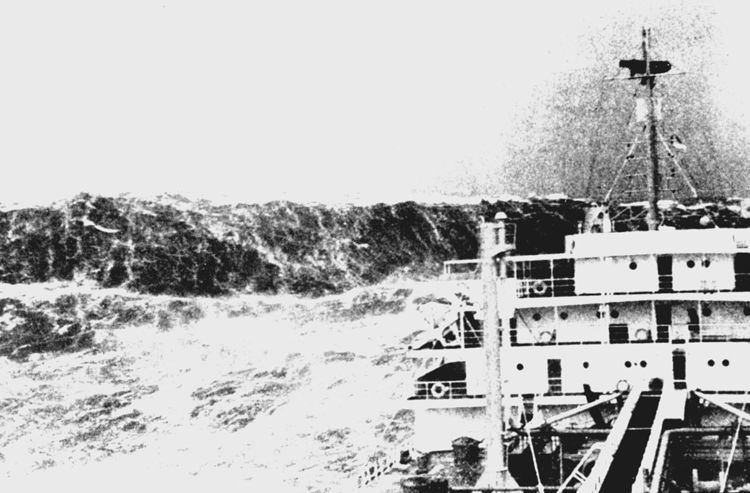In fluid dynamics, the wave height of a surface wave is the difference between the elevations of a crest and a neighbouring trough. Wave height is a term used by mariners, as well as in coastal, ocean and naval engineering.
At sea, the term significant wave height is used as a means to introduce a well-defined and standardized statistic to denote the characteristic height of the random waves in a sea state. It is defined in such a way that it more–or–less corresponds to what a mariner observes when estimating visually the average wave height.
For a sine wave, the wave height H is twice the amplitude:For a periodic wave it is simply the difference between the maximum and minimum of the surface elevation z = η(x – cp t):with
cp the phase speed (or propagation speed) of the wave. The sine wave is a specific case of a periodic wave.
In random waves at sea, when the surface elevations are measured with a wave buoy, the individual wave height Hm of each individual wave—with an integer label m, running from 1 to N, to denote its position in a sequence of N waves—is the difference in elevation between a wave crest and trough in that wave. For this to be possible, it is necessary to first split the measured time series of the surface elevation into individual waves. Commonly, an individual wave is denoted as the time interval between two successive downward-crossings through the average surface elevation (upward crossings might also be used). Then the individual wave height of each wave is again the difference between maximum and minimum elevation in the time interval of the wave under consideration.Significant wave height H1/3, or Hs or Hsig, in the time domain, is defined as the average height of the one-third part of the measured waves—which are N in number—having the largest wave heights:with
Hm the individual wave heights, sorted in such a way that the highest wave has
m=1 and the lowest wave is for
m=
N. Only the highest one-third is used, since this corresponds best with visual observations of experienced mariners: eyes and brain apparently focus on the higher waves seen.
Significant wave height Hm0, defined in the frequency domain, is used both for measured and forecasted wave variance spectra. Most easily, it is defined in terms of the variance m0 or standard deviation ση of the surface elevation:where
m0, the zeroth-moment of the variance spectrum, is obtained by integration of the variance spectrum. In case of a measurement, the standard deviation
ση is the easiest and most accurate statistic to be used.
Another wave-height statistic in common usage is the root-mean-square wave height (or RMS wave height) Hrms, defined as:with
Hm again denoting the individual wave heights in a certain
time series.

